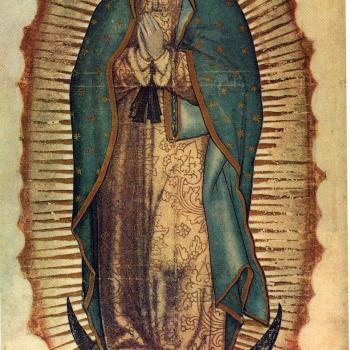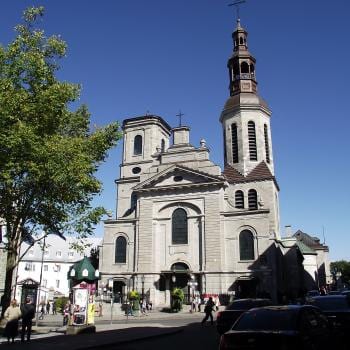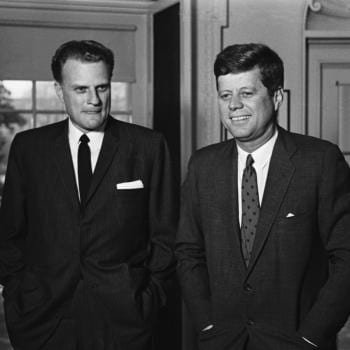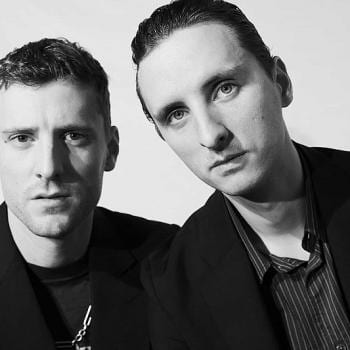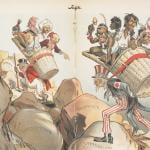Protestant converts to Roman Catholicism will often refer to the power of Christ’s real presence in the Mass as a primary factor in their experience. Sometimes Christ’s real presence in the Mass is the reason to remain Roman Catholic even in the face of scandal:
A friend asked recently why I don’t choose a church that feeds me spiritually and aligns better with some of my personal values. My response, which surprised me more than my friend, was, “I think it’s because the transubstantiation matters to me.” I came for the faith that daily life is sacramental, that Jesus is present in moments of both holiness and ordinariness, which grow harder to distinguish between the longer I am here.
Protestantism, accordingly, is an inferior version of Christianity because has generally been suspicious of the wide claims made on behalf of Rome’s sacraments. Some Protestants may only regard the Lord’s Supper as symbolic. The bread and grape juice remain exactly what they are, but they serve as reminders of Christ’s death.
That sort of rationalism, according to some, is responsible for disenchanting the universe. Protestants not only desacralized the Mass, or stripped it of its mystery, but also encouraged a mechanical or scientific view of creation. In turn, it strips the world of all mystery. The German sociology, Max Weber, picked up on this as William T. Cavanaugh recently explained:
According to Weber, the Puritan accepts the ultimate meaninglessness of this world but tries to work out his salvation in inner dialogue with God while following his worldly vocation as a businessman. This is how Protestantism led to capitalism. For the Puritan, the Catholic sacraments were mere magic, an attempt to manipulate God. The Reformation swept the world clean of such idols, so that God would be all in all. But removing God from the material world to protect God’s holiness would eventually lead to the disenchantment of all worldly pursuits. Science, for example, deals only in facts; it cannot produce meaning. Capitalism responds to whatever the market dictates; values are irrelevant to it. The bureaucracy of the state seeks efficiency; it does not respond to the will of God.
For a lot of people, what they know of Weber ends there, in disenchantment.
Here’s the thing, however. The very idea of Christ’s real presence in the Mass is highly dependent on rational explanation. Someone simply going to a service and watching the Mass would not be able to tell the difference in the bread and wine before or after the consecration. In fact, even a devout Roman Catholic would not know that the bread and wine become the “real” body and blood of Christ unless bishops, priests, or church apologists explained what is going on in the sacrament. Here is how the Catechism explains transubstantiation:
1375 It is by the conversion of the bread and wine into Christ’s body and blood that Christ becomes present in this sacrament.
1376 The Council of Trent summarizes the Catholic faith by declaring: “Because Christ our Redeemer said that it was truly his body that he was offering under the species of bread, it has always been the conviction of the Church of God, and this holy Council now declares again, that by the consecration of the bread and wine there takes place a change of the whole substance of the bread into the substance of the body of Christ our Lord and of the whole substance of the wine into the substance of his blood. This change the holy Catholic Church has fittingly and properly called transubstantiation.
Dwight Longenecker uses even more words, much like logocentric Protestants, to explain what happens in the Mass:
The word “transubstantiation” means “substance across” and to understand what this means we must first understand what the medieval philosophers like St Thomas Aquinas meant by the word “substance”. They meant by this word almost exactly the opposite of what we mean by it. When we say something is “substantial” we mean it is solid, real, physical and concrete. The medieval philosophers however, used the word “substance” to indicate the invisible and eternal quality of a thing. The physical aspect of a chair, for example, is temporary and mutable. It changes. Eventually, given enough time, the wood of the chair will break, rot and decay into dust. The “chair-ness” of the chair is the eternal, invisible part and this is what is referred to as the “substance.”
With bread and wine the “breadness” of the bread and the “wine-ness” of the wine is the substance and it is this “substance” which is transformed. The physical part of the bread and wine is called the “accident” and the accident of bread and wine remain although the substance of the bread and wine have become the Body and Blood of Christ.
… However, this philosophical explanation, like all philosophical explanations can only take us so far. In fact, the invisible part of a thing and and the physical part cannot necessarily be separated in this way. The invisible part of me and the physical part seen in the photographs is a unity. The objection to this explanation of transubstantiation that I have just given is that it sounds like the Lord is only “spiritually present” in the Eucharist. If the physical aspect is not transformed in some way, then some Catholics argue, the transformation is just an ethereal or spiritual presence sort of floating about and around the bread and wine. This is to misunderstand the fact that the invisible substance is the most real part of the bread and wine, not the least real. Not only is it the most real, but it is not separate from the physical aspect, nor can it exist separately from the physical aspect. Therefore, inasmuch as the substance is changed there is also some sort of change in the physical aspect.
I don’t believe this. Surprise. I’m a Protestant. But if you want to complain about the way Protestants destroyed the sacred canopy that gave spiritual sustenance to Christendom, you may also want to take it up with Roman Catholic theologians. They too tried to make comprehensible mysterious realities. Systematizing truth or rationalizing sacred mysteries is what churches do. That’s why we have catechisms, creeds, schools of theology, sermons, and homilies. Demystifying the Mass occurred well before Protestantism, when the Fourth Lateran Council tried to put into words the spiritual realities alleged to be happening in one sacrament.



